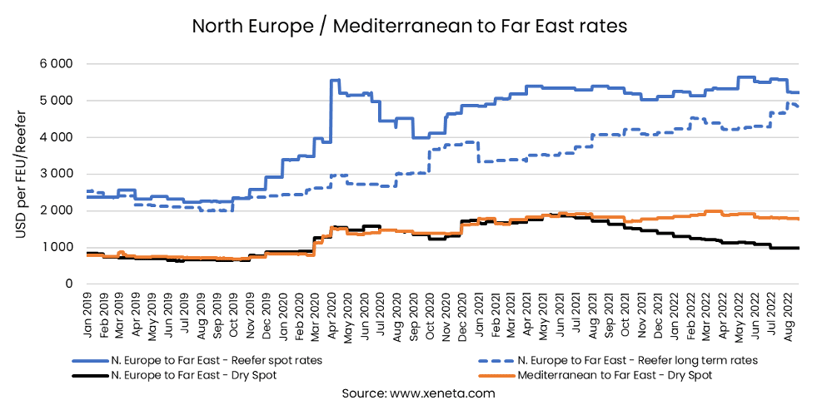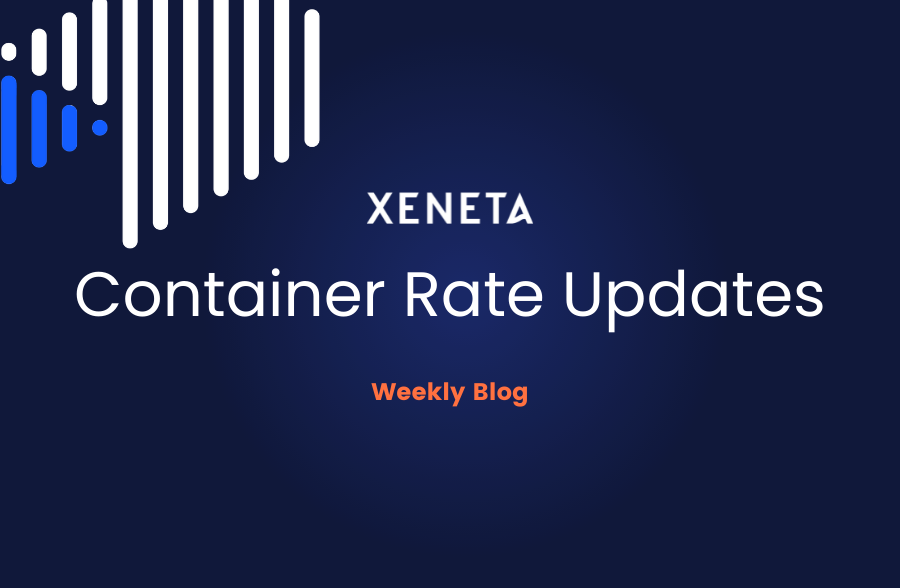Decreasing spot freight rates and increasing long term container rates between the Far East to US West and East Coasts create an opportunity for carriers to secure long term contracts while offering shippers a chance to improve supply chain resilience.
Spot freight rates on the Far East to US East Coast have fallen by more than USD 3 400 per FEU (- 26.9%) since the start of this year, compared to the US West Coast, which has declined by USD 3 200 per FEU (-33.1%).
The spot rate from the Far East to the US West Coast stood at USD 6 400 per FEU on 9 August, whereas the spot rate to US East Coast stood at USD 9 300 per FEU.
It is now USD 2 900 more expensive to get a 40' container to the US East Coast compared to US West Coast when importing it from the Far East. At the start of the year, exporting to the US East Coast was USD 3 100 per FEU more expensive.
Read more below in Xeneta's weekly container rate update.

Rate Trend Between Far East To US West and East Coasts
Historically, spot freight rates for the two had followed each other closely, making the route Far East to US East Coast on average USD 1 000 per FEU more expensive than US West Coast.
The rates had followed the same upward trend in Q2 2021 when the spot market took off. Rates to US East Coast rose to a higher level while also enjoying an increased premium over rates to the US West Coast.
On the long term rates, the US West Coast remains a little less expensive than sailing towards the US East Coast, the latter adding around USD 1 900 per FEU on 9 August.
Long term rates to US East Coast have risen by 103.5% since the start of the year. Similarly, those to the US West Coast from the Far East have risen by 96.9%.
Decreasing spot freight rates and increasing long term rates between the Far East to US West and East Coasts show that, similar to many other major trade routes, the spread between the long and the spot rates is diminishing and, in some cases, turning negative.
The spot freight rates from the Far East to US West and East coast routes gradually decline while the long term rates move sideways. Later in August, a negative spread on the Far East to US East Coast is expected, as is the case on the US West coast already.
Therefore, the spread between the spot and long term rates on the Far East to US East Coast and West Coast pose a potential for the carriers interested in securing long term rate contracts with large volume shippers on these routes.
On the other hand, falling shipping rates, in general, would offer an opportunity for global shippers as they seek to strike the right balance between the spot and long term market while improving supply chain resilience.
Note:
The 'Weekly Container Rates Update' blog analysis is derived directly from the Xeneta platform, and in some instances, it may diverge from the public rates available on the XSI ®-C (Xeneta Shipping Index by Compass, xsi.xeneta.com. Both indices are based on the same Xeneta data set and data quality procedures; however, they differ in their aggregation methodologies.
Want to learn more?
The container market is no walk in the park. You need to have the latest rate and supply data to be able to plan and execute your freight procurement strategy quickly.
Xeneta's real-time and on-demand data is here to help you answer, "Am I paying the right freight rate to get my cargo where it needs to be?"
Sign up for our weekly 15-minute live group demo below and see Xeneta for yourself.






